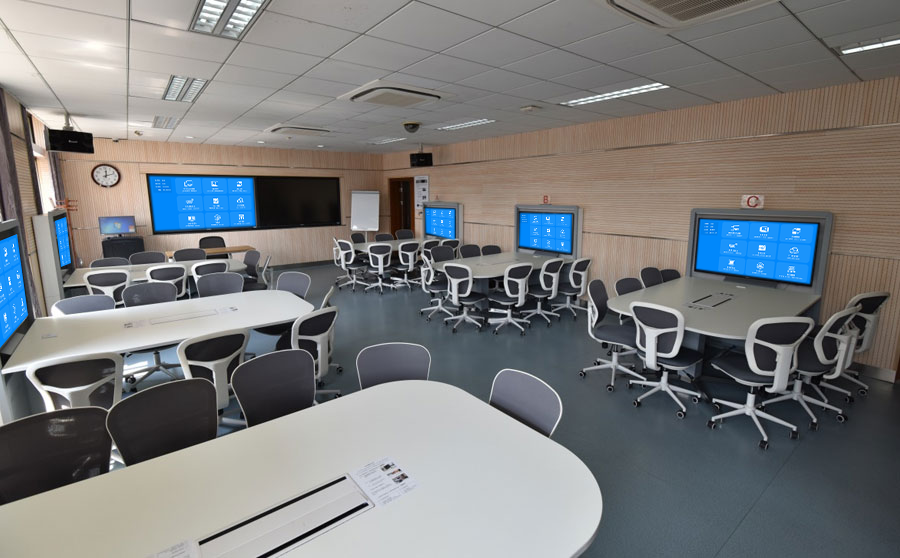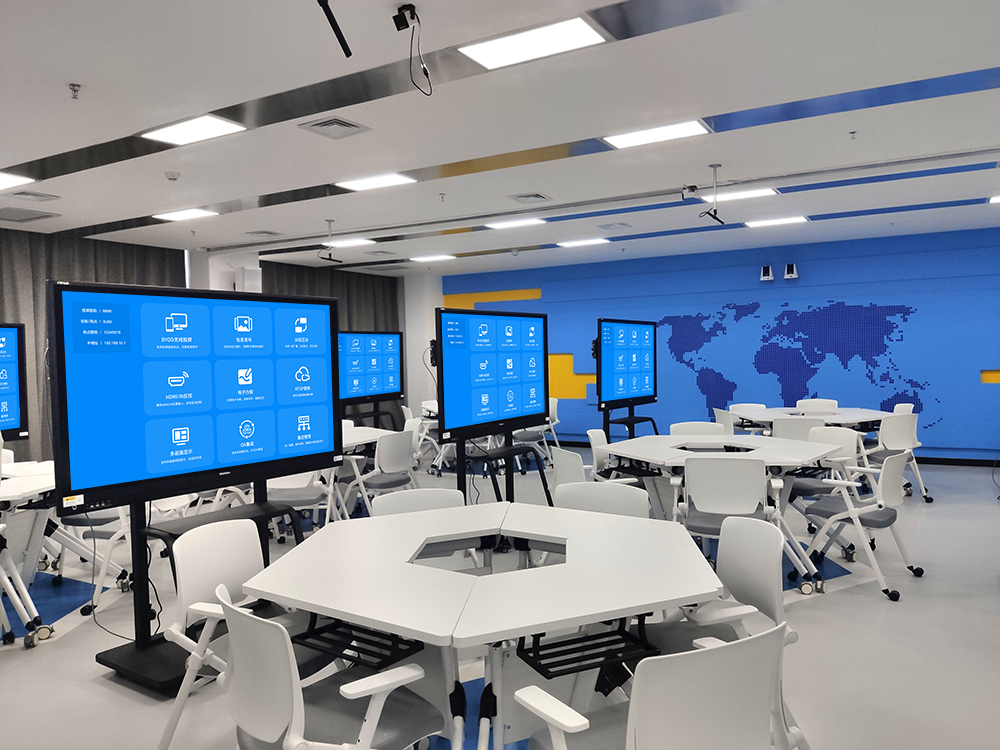Multi-Screen Interaction: Seamless Device Collaboration
The multi-screen interaction solution breaks down the barriers between phones, computers, tablets, and large displays. With its core features of universal compatibility, easy operation, and powerful connectivity, it enables cross-screen content flow and multi-device collaboration. Covering scenarios like the office, classroom, and home, it makes information delivery more efficient and the interactive experience richer.
Universal Interconnectivity, Breaking Boundaries
It’s deeply compatible with Android/iOS phones, Windows/macOS computers, and tablets, as well as smart TVs, meeting screens, and projectors. With a compatibility rate of over 95%, both new and old devices can connect easily:
- Instant Pairing: Devices on the same network are automatically detected. The “Wireless Display” function on your phone or “Project” on your computer can be activated with a single tap to link screens in under 2 seconds.
- Multiple Connection Modes: It supports wireless mirroring, QR code connection, and quick Bluetooth pairing. Paired with HDMI/Type-C adapters, it can handle complex signal environments without any dead zones.
- Memorizes Frequent Devices: It automatically saves frequently connected devices and will send a pop-up reminder when you’re nearby, making the process more convenient without repeated searches.
Versatile Features for Enhanced Collaboration
1. Seamless Content Flow
- Two-Way Mirroring: You can mirror a presentation from your phone to a large screen, and the large screen can also control your phone to flip pages or switch content. You can also mirror your computer to a tablet to use it as a “mobile second screen,” letting you edit documents while researching, making multitasking more efficient.
- Split-Screen Display: It supports 2-4 devices mirroring content at once, with different content displayed in separate areas on the main screen. This makes comparing proposals in the office or showing group work in a class a breeze.
- Fast File Transfer: You can transfer images, documents, and videos directly between devices with a “mirroring pop-up,” with transfer speeds of up to 10MB/s. This eliminates the need for Bluetooth or USB drives and makes sharing materials instant.
2. In-Depth Multi-Device Interaction
- Real-Time Annotation: During a meeting or class, you can use your phone, computer, or a large screen to draw, annotate, and add text to the mirrored content. Annotations are synced across all devices in real time, so feedback is instantly compiled without the need for back-and-forth communication.
- Convenient Remote Control: A teacher can use a tablet to remotely control the main screen to flip through a lesson, and a presenter can use their phone to adjust the mirroring volume or switch content. This frees you from the device and offers a more flexible operation.
- Multi-Screen Entertainment: For home entertainment, you can mirror a movie to the TV and use a tablet to interact with subtitles. You can also mirror a game to a projector and use your phone as a controller for a more immersive experience.

Practical Applications
Office: Doubled Efficiency
- During a project discussion, team members can simultaneously mirror proposals from their computers to the large screen to compare differences. You can also instantly mirror a photo of an on-site issue from your phone to quickly focus the discussion and boost decision-making efficiency by 40%.
- For remote meetings, a colleague from another city can mirror their presentation from their computer while the local team uses a tablet to annotate feedback, creating seamless online and offline collaboration.
Classroom: More Engaging Lessons
- A teacher can mirror a lesson from a computer and use a tablet to annotate key points in real time. The content is synced to the large screen and student devices. A student can also mirror their homework from their phone, and the whole class can provide feedback, boosting classroom participation by 50%.
- During group discussions, each group can mirror their work to a smaller group screen. Then, with a single tap, a teacher can push the content to the main screen for a more organized presentation and precise feedback.
Home: Sharing Joy
- For family time, you can mirror an educational cartoon from your phone to the TV and use a tablet to provide real-time explanations. During a party, friends and family can take turns mirroring photos and videos, sharing fun moments on a large screen without having to huddle around a small one.
- When watching a movie, you can mirror it from your phone to the TV. The “picture-in-picture” function lets you check messages or take calls without interrupting playback.
Smart Management, Secure and Convenient
- Tiered Access Control: You can set administrator and user permissions. Only authorized devices can initiate mirroring or modify content, which prevents irrelevant interference.
- Remote Monitoring: An administrator can monitor the status of devices from a backend, check mirroring records, and perform remote firmware upgrades or power on/off, which reduces maintenance costs.
- Encrypted Transmission: All content transmission is encrypted to prevent the leakage of confidential information and personal privacy.
Deployment is simple. Existing devices can be used by connecting to the network and power, with no need for wiring modifications. The multi-screen interaction solution, with its focus on collaboration, flexibility, and efficiency, allows every device to maximize its value and easily adapt to various scenarios.